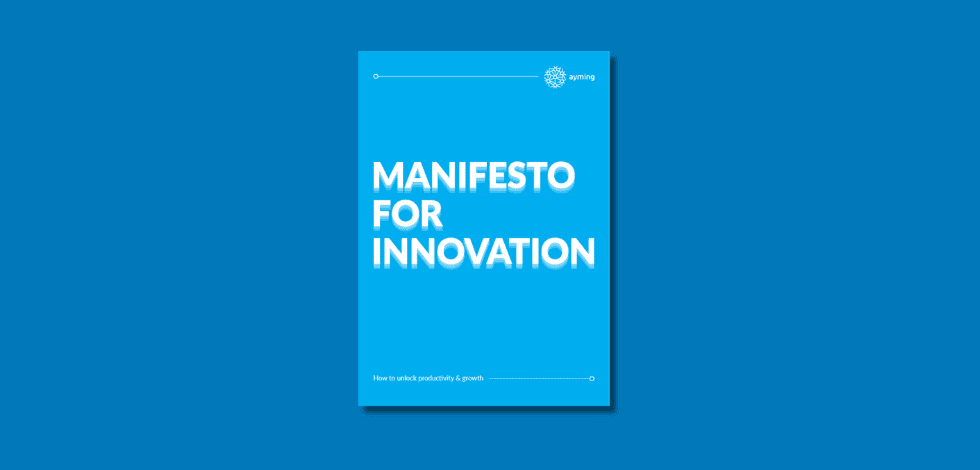If ever there was a business that not only embraces change but flaunts it, it’s fashion. But with the Covid-19 pandemic, it’s not just the seasons and consumer tastes that are changing. So is the sales channel, and the environment too – technological, ethical, and retail, helping to bring FashionTech evermore into the spotlight.
Many outlets have gone to the wall as clicks displace bricks-and-mortar stores. Survivors scramble to raise their digital game to compete with online specialists and direct-to-consumer suppliers. They’re not the only ones playing catch-up. Designers, manufacturers, marketers, sellers and distributors are all being challenged to catch the FashionTech wave or flounder as the industry faces potentially transformative disruption.
What is FashionTech?
So, what is FashionTech? There’s wearable tech – everything from garments that incorporate advanced technology, such as microprocessors, to digitalised fashion accessories, like smartwatches. But more widely, technology is also converging with fashion at every stage of the clothing product lifecycle from design through production, to marketing, sales and distribution, and after-sales. It’s this array of applications and opportunities that we scan here.
The promised fashion for truly ‘smart’ clothing is not yet in full swing. In 2014 Ralph Lauren showed off its Polo Tech at the US tennis open. With more sensors close to the skin than a heart monitor on a strap, they were said to produce better data on heart waves, not just pulse. Sales of 10 million smart garments were predicted, almost tripling to overtake smart wristbands by 2016.
Instead, smartwatches, like the Apple Watch, cannibalise the wristband and chest-strap monitor market. Expectations that smart garments would make the leap from elite athletes to the mainstream proved premature. By 2019, worldwide sales of smart clothing reached $1.3 billion, growing more slowly than wearables overall. By 2022, Gartner expects the garments segment to account for just 2.3% of a $93.8 billion marketplace. However, continuing advances in the miniaturisation of sensors will allow them to be integrated more easily in smart garments. Current applications range from smart boots, heated jackets and cooling vests in construction to medical Femtech – a smart bra designed to compensate for historically poor detection of heart conditions among women.
Clothing you can’t hang in your wardrobe
What it means to ‘dress smart’ is changing in other ways with digitalisation. Even fashionwear has now gone fully virtual. The Fabricant was founded in 2018 by two Amsterdam Fashion Institute graduates to make garments to order. The digital-native designers made history the year after, auctioning a virtual dress for the first time – in a $9,500 blockchain transaction. It’s ‘worn’ by the proud owner on Facebook and Instagram.
With perfect timing, in 2020, Fabricant launched the Leela platform, where users can download a range of ready-to-wear items – created painstakingly with 3D modelling software – for their online personas. They elicited a ‘completely crazy’ response amid the coronavirus lockdowns as 10,000 people used the app to attire their avatars for social media, gaming and virtual worlds.
According to ‘the world’s first digital fashion house ‘, virtual fashion allows consumers to avoid the waste and pollution associated with traditional fashion. It sounds like a 21st-century rewrite of The Emperor’s Clothes, but digital fashion designer Amber Jae Slooten’s inspiration is disgust at the industry’s waste and pollution. She believes that real-world fashion will become increasingly technological and sustainable, with smart materials that act as a second skin and monitor the body.
The American premium clothing brand Tommy Hilfiger has joined forces with Fabricant to accelerate its digitalisation of design by spring 2022. Working with the US company’s in-house incubator Stitch, it created a digital hooded sweatshirt as a proof of concept as Hilfiger transitions towards a production-on-demand business model.
Parent company PVH’s aim is to ‘digitise its end-to-end value chain’ and meet consumer needs faster and in a more sustainable way. Major fashion houses have launched internal academies to counter skills shortages, including tech-related know-how. For example, Gucci is searching for ‘Scrum masters’ to coach and support its global digital teams to continuously improve product development through the agile principles pioneered in software design.
Rise of FashionTech could leave some fashion houses on the rail
Already left behind by sports gear makers, fashion houses need to pull up their smart socks, or Big Tech too will – not for the first time – disrupt and displace another sector’s established order.
In 2019 Nike launched a smart sneaker that adapts to an athlete’s feet, which can expand by almost a half-size in play. The Adapt basketball shoe uses a ‘power-lacing system’ and an app to create an adaptable custom fit – part of a long-term vision of intelligent products “that adapt at the speed of sport to improve an athlete’s performance”.
Meanwhile, Microsoft and Google have registered patents in smart textile technologies – from wearable therapeutic stimulation for Parkinson’s disease to disrupting paparazzi or other unwelcome snappers. Apple is working on smart fabric buttons for clothing and devices. Its haptic touch technology, developed for the iPhone, could also feature in smart garments.
Bringing together two sectors
Cross-sector collaboration will be crucial in interweaving tech and fashion. Levi and Google are one such pairing. Launched two years earlier for commuting cyclists, their Jacquard jacket was updated in 2019 for a wider audience. It can remotely trigger the wearer’s phone camera, deliver a daily briefing, and create a shortcut for another task using Google Assistant. Jacquard software tags are also inserted in backpacks produced with Yves Saint Laurent and Samsonite, and an Adidas sports shoe that links football with digital gaming.
Clothing companies that don’t get up to speed with tech risk paying expensive licence fees to connect their products with consumers fixated on fitness, wellbeing and seamless connectivity.
Nor are the other digital technologies disrupting every major industry going to overlook fashion, one of the world economy’s biggest, with the apparel segment alone worth an estimated $1.5 trillion. Artificial intelligence (AI), machine learning (ML) and virtual or augmented reality (VR/AR) have significant ramifications for design and production, stock control and marketing, sales and customer service.
Aiding the customer experience with FashionTech
Predicting demand for clothing is complicated by many factors. Several brands already use predictive analytics to factor in everything from weather to colour preferences, social media trends and other influences. Exponents claim AI can reduce forecasting error by half, while other applications include improving manufacturing efficiency by spotting defects in fabric and colour anomalies and using computer vision to streamline quality assurance or spot fakes.
Virtual sales assistants and stylists can democratise the exclusive ‘personal shopper’ role as chatbots become more sophisticated. The AI-powered Fit Assistance tool launched by online retailer Asos is designed to mitigate the high costs of free returns, while H&M is reducing the need for discounted sales by automatically matching stock to demand and optimising supply chain and inventory management.
Not only are online clients offered fitting advice, but they will also be able to ‘try on’ items digitally from the comfort of their own homes as the shopping experience becomes more immersive through VR/AR. Major retailers such as Adidas, Macy’s and Modcloth are experimenting with virtual dressing rooms, bringing the technology mainstream. In future, adding haptic response capability could even recreate the sense of feeling the fabric.
Fashion retailers have traditionally competed to get the latest designs as quickly as possible from drawing board to store or, now increasingly, e-commerce product galleries and social media click-to-buy ads. There is a distribution race too, with the rise of next day and even same-day delivery or collection. All will be watching whether Amazon Prime Air – the proposed 30-minute airborne delivery service by drone – remains pie-in-the-sky.
Can FashionTech solve fast fashion’s ethical dilemma?
Fast fashion, however, faces a more fundamental challenge – and a conscientious consumer backlash against its substantial environmental impacts and unethical labour record stretching from Bangladesh to Bradford. Make Fashion Circular is a campaign by the Ellen McArthur Foundation to reshape the industry to fit a circular economy. Beginning with denim, it has signed up more than 40 brands, retailers, manufacturers and others to the Jeans Redesign guidelines for reducing pollution, promoting recyclability and safeguarding workers’ rights.
The industry will also need all its creative flair and technological capabilities to fashion more sustainable processes and business models. It’s noteworthy that Polimoda in Florence, one of the world’s top fashion schools with designs on creating a new generation of chief innovation officers, is offering degrees in sustainable fashion as well as digital marketing and fashion technology.
Sales of ethical clothing grew by almost 20% in 2018. Where Patagonia led, not least with its own WornWear hub for second-hand gear, others follow. Rental and reuse platforms are taking off from Rent the Runway in the US to the UK’s MyWardrobe, an app for selling on rather than dumping items that no longer fit. Headed by a former boss of TopShop, the site for ‘environmentally focused and stylish women’ notes that the textile and apparel industry accounts for 20% of all global production waste.
Single-use plastic bottles can already be turned into swimwear and fleece tops. Other recent innovations in textile manufacturing range from eco-friendly 3D-printed polymer fabric outfits to vegan leathers made from yeast cells. Meanwhile, Unmade’s digital infrastructure for customer-specified apparel aims to end wasteful mass production.
To be successful and sustainable, companies in the fashion industry must continue adopting and tailoring a variety of technologies, while showing a real flair for change.












No Comments